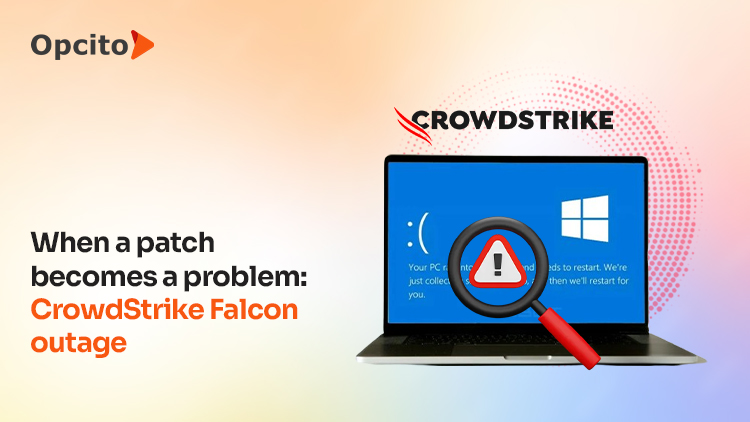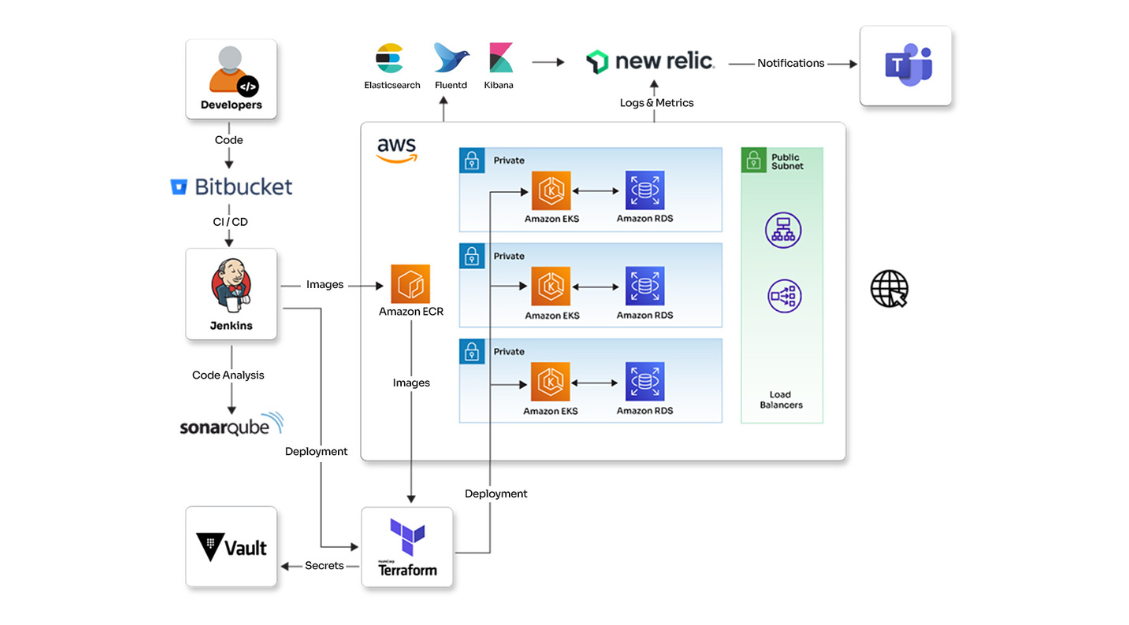Comprehensive cloud management with CloudForms
See how Opcito achieved comprehensive cloud management with CloudForms
Engagement details
A multi-cloud solution with multiple tenant accounts for different projects, each using a different infrastructure provider, can be difficult to manage. In addition, the manual provisioning process, capacity, performance, configuration, orchestration, and life-cycle management can also be troublesome. So, designing a multi-cloud environment that is expandable in platforms with a centralized management solution can help in such cases.
Technologies
Cloud
Tools and platforms
- OpenStack
- CloudForms
Benefits
- Cost allocation and chargeback
- Management and user reporting
- Relationship view, monitoring, and capacity planning
- Smart-State-Analysis.
Subscribe to our feed
From the CEO’s Desk: Fast forwarding your DevOps
Fast forwarding your DevOps
From the CEO’s Desk: Fast forwarding your DevOps
Fast forwarding your DevOps
Trace your applications on the go with StatsD and Jaeger
Trace your applications on the go with StatsD and Jaeger
“Measurement is fabulous. Unless you're busy measuring what's easy to measure as opposed to what's important” –Seth Godin.
What more can you do with Ansible AWX?
What more can you do with Ansible AWX?
In my last blog, I discussed how you could set up autoscaling infrastructure using Ansible AWX for AWS autoscaling group configuration and deployment. You can use this to update your existing autoscaling groups as well without touching user data. In this blog post, I will mainly focus on what value you can add with Ansible AWX and how it can help you to manage your infrastructure in better ways.
Adios 2017 welcome 2018 - Opcito’s year in review
Adios 2017 welcome 2018 - Opcito’s Year in Review
2017 is behind us, and we all are welcoming 2018 with lots of joy, enthusiasm, and hope. 2017 was a great year for automation. We saw major releases from some of the biggest contributors and new products and services from the tech giants in the CloudOps, TestOps, ContainerOps, and DevOps areas. This included 4 new releases from orchestration experts Kubernetes, Prometheus 2.0, Moby, and Linuxkit from Docker, Kata containers from OpenStack, Heptio Ark, RBAC, Angular 4, React JS, etc.
Configuration management using HashiCorp Vault
See how Opcito helped a customer achieve excellent configuration management using HashiCorp Vault
Engagement details
Each microservice has its vital configuration files. So, configuration management of a multi-microservice system can be tiresome. The secret configuration is generally maintained in the form of YAML files. However, storing credentials in the YAML file is insecure. Maintaining the configuration files across the environment (development, staging, pre-production, production, etc.) is complicated, with a risk of mistakes while manually copying the files.
Technologies
- Cloud
- Big Data
- DevOps
- Containers
Tools and platforms
- AWS ECS
- Docker
- AWS ELB
- Hashicorp Vault
- Consul
Benefits
- Secured centralized management system.
- SimplifiedRole Based Access Control (RBAC) list for controlled user accessibility.
Subscribe to our feed
An Early Christmas Present for Kubenauts - Kubernetes 1.9
An Early Christmas Present for Kubenauts - Kubernetes 1.9
Kubernetes 1.9 is here! This is the fourth and final release of Kubernetes this year. Without further ado, let's look at what the Elves have delivered in 1.9 as an early Christmas present to all of us!
OpenStack Foundation Embraces Containers with “Kata Containers”
OpenStack Foundation Embraces Containers with “Kata Containers”
On Dec. 5, when the enthusiastic container community was getting ready for KubeCon, the OpenStack Foundation renewed its long-standing friendship with the announcement of a new effort called Kata Containers with the goal of unifying the speed and manageability of containers with the security advantages of virtual machines (VMs).
From the CEO’s Desk: What do the re:Invent 2017 releases mean to your DevOps?
What do the re:Invent 2017 releases mean to your DevOps?
“What happens in Vegas stays in Vegas” is one of the most famous taglines used in modern times to brand or market a city, especially from the tourism perspective. Luckily though, this doesn’t hold true when it comes to AWS re:Invent as whatever happens in Vegas in these 5 days changes the whole cloud and related services market, and this year was no exception.











